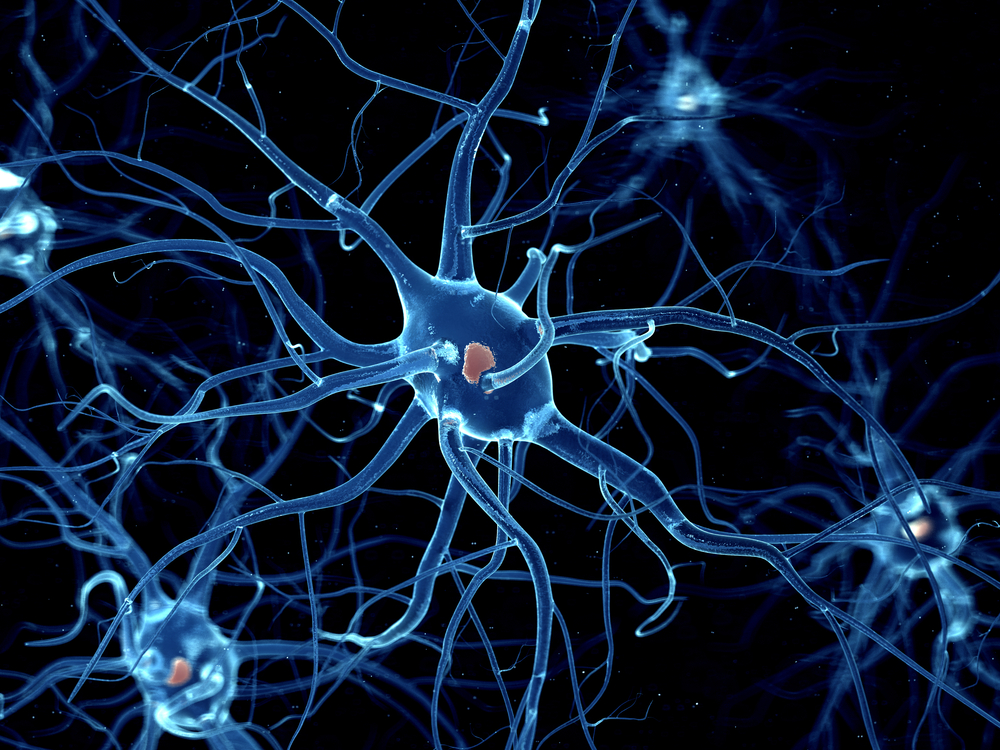Tonic Inhibition Deregulation May Be Key to Understanding Angelman Syndrome, Researchers Believe
Written by |

Deregulation of the brain’s ability to filter real neural signals without becoming overloaded could be the key to understanding the variety and severity of symptoms experienced by Angelman syndrome patients, according to researchers.
The study, “Pathophysiological impact of diverse dysregulation of tonic inhibition in Angelman syndrome,” was presented by Kiyoshi Egawa, MD, PhD, at the recent 2018 ASF/Dup15q Research Symposium in Chapel Hill, North Carolina.
Angelman syndrome is a genetic neurological disorder caused by the loss or malfunction of the maternal copy of the UBE3A gene — which provides instructions for making an enzyme called ubiquitin protein ligase E3A that normally targets other proteins to be destroyed.
In the absence of a functional maternal UBE3A, the brain’s ability to correctly identify excitatory and inhibitory neural signals without being overloaded — a process known as tonic inhibition — is affected, causing the typical symptoms associated with Angelman syndrome, including seizures, impaired movement, and cognitive delays.
Excitatory and inhibitory neural signals are the “yin and yang” of the brain. Excitatory signaling from one nerve cell to the next makes the latter cell more likely to fire an electrical signal. Inhibitory signaling makes the latter cell less likely to fire. This is the basis of communication between nerve cells in the brain.
GABA (γ-aminobutyric acid) is the main inhibitory neurotransmitter, or neural signal, in the brain. This chemical works by preventing excessive neuronal activity, directly regulating tonic inhibition. To exert its inhibitory function, GABA needs to pass through specific channels located on the surface of neurons, called GABAA receptors.
These receptors are composed of five subunits surrounding a central channel that can only be opened in the presence of GABA. Depending on the specific region of a neuron’s membrane in which these GABAA receptors are inserted, the inhibitory responses produced can be shorter or longer.
Recent studies performed in mice genetically modified to have an inactive UBE3A gene showed these animals lacked tonic inhibition regulated by GABAA receptors. In addition, different subunits of GABAA receptors contribute differently to tonic inhibition.
Because tonic inhibition is controlled differently in different regions of the brain, researchers have now evaluated tonic inhibition in various regions of the brain in an Angelman syndrome mouse model.
These animals had reduced tonic inhibition in neurons of the hippocampus and cortex — regions of the brain associated with emotion, memory, perception, and cognition — but not in neurons from the thalamus, an area involved in relaying motor signals and regulating consciousness, sleep, and alertness.
Since a specific subunit of the GABAA receptor, called α5, is only expressed in the hippocampus and cortex, scientists hypothesize that increasing its activity, using molecules called positive allosteric modulators for the α5 subunit containing GABAA receptors (PAM-α5GABAaR), may help improve Angelman symptoms.
The team is currently testing this possibility by administering PAM-α5GABAaR to mice that lack UBE3A and comparing its effectiveness with gaboxadol (OV101) — which increases tonic inhibition on a global scale in the brain — by evaluating cognitive dysfunction and brain activity via electroencephalogram (EEG).
“Our study can help interpretation of the result of [the] on-going clinical trial for OV101. If the compound we will try is effective, it can enforce the effect of OV101,” Egawa, from the Department of Pediatrics at Hokkaido University Graduate School of Medicine in Japan, told Angelman Syndrome News.
Researchers are also convinced the level of tonic inhibition deregulation can also vary in different genetic backgrounds associated with Angelman syndrome, because the deletion of the 15q11-13 region from chromosome 15 — reported in about 70 percent of cases — contains the genetic sequence encoding for the α5 subunit of the GABAA receptor.
To test this hypothesis, scientists have generated several lines of neurons derived from induced pluripotent stem cells (iPSCs) of patients with various genotypes of Angelman syndrome and healthy controls.
The team is now testing these neurons in the laboratory and is already preparing to study their inhibitory functions.
At this point, investigators are confident that understanding the different mechanisms that contribute to the deregulation of tonic inhibition could be essential in explaining the variety and severity of symptoms experienced by patients with Angelman syndrome.





